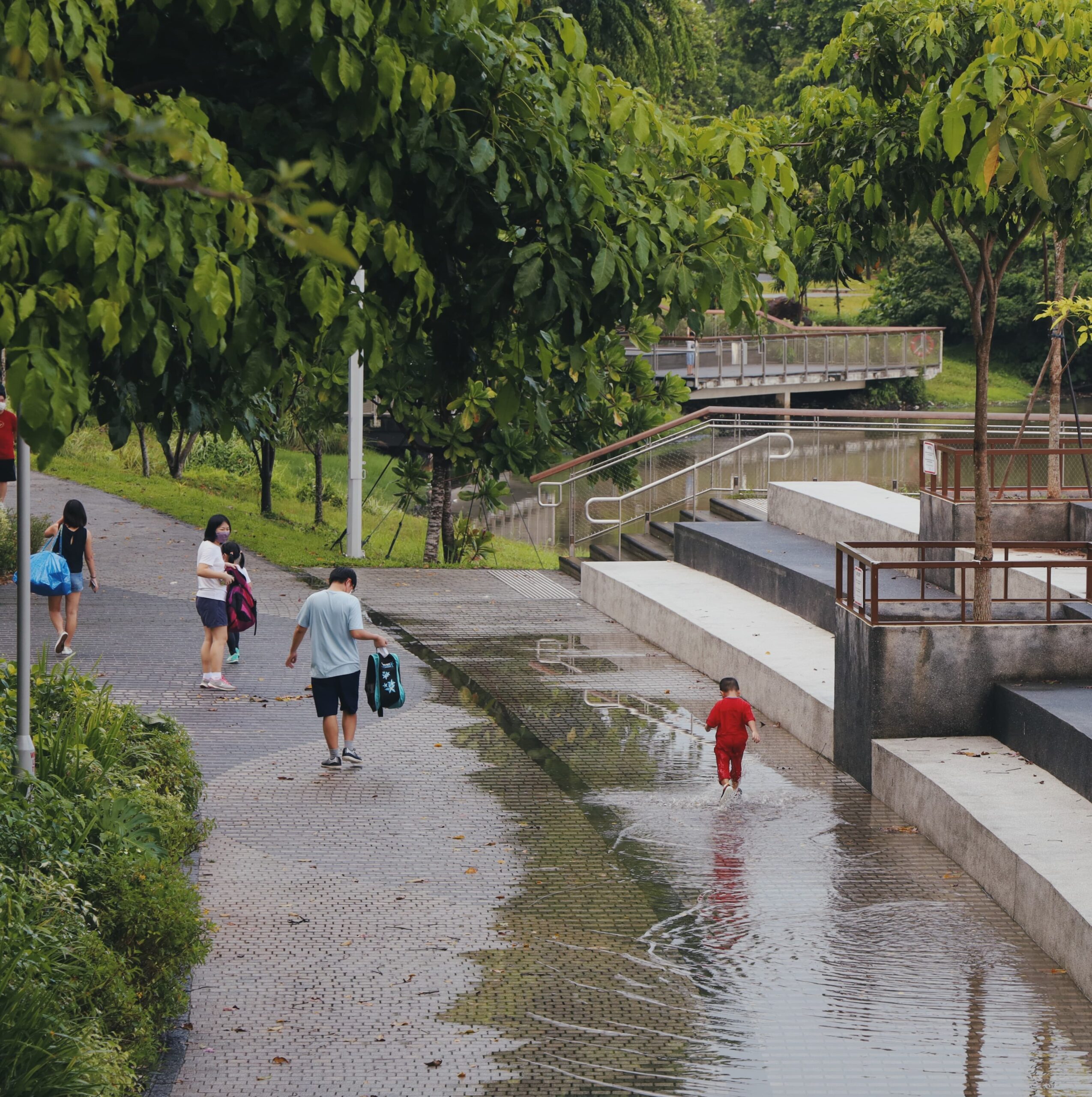Download our publication on urban water management today
This article is part of our publication ‘Urban water management’.
Download nowPerspective
Nature based solutions
Climate change adaptation
Urban water management
+2


Nature-based solutions (NbS) are measures that encapsulate the notion of water as a resource. At times, NbS are rainwater management, inspired by nature’s methods such as permeable pavement and underground storage; at other times the solution is nature-based elements that support biodiversity.
Due to the large amount of impermeable surfaces present in cities, rainwater runoff in a city differs from the runoff pattern that occurs prior to the urbanisation process. The hyetograph below reveals that urbanisation has an impact. The runoff from a city covered with impermeable paving will result in quick and high runoff. As runoff from several catchments arrive at the same time to the same places in the sewers, it creates bottlenecks, heightening the risk of flooding.
By viewing NbS as an extension to the traditional sewerage system, the aim of NbS is to smoothen the runoff hyetograph and reduce pressure on the sewerage system. Runoff from catchments will arrive at the usual bottlenecks at different times. By delaying and reducing the maximum runoff, it is possible to reduce the risk of flooding.
In Denmark, there is no standard definition of how to design NbS. In practice, the recommendation is that every time you design a NbS,you need to consider everyday rain, design storms and cloudbursts (as illustrated in the 3-point approach method). Often professionals and stakeholders tend to focus on one type of rain event. However, there can be numerous problems in an area related to the different rain events. It is therefore highly important to focus on all types of rain events when designing solutions. NbS are particularly efficient for solving everyday rain challenges but when used carefully, NbS can contribute substantially to solving some of the problems associated with heavy rainfall and stormwater.

This article is part of our publication ‘Urban water management’.
Download nowWhen developing new or using existing climate adaptation products, there is often a need for full-scale testing, optimisation, and documentation of the product before implementation. The product might be subject to a European Standard and required to adhere to certain specifications. Or the producer might need to document the water balance of a new NbS element or the permeability of a specific pavement. Denmark has more than 30 years of experience with testing traditional components in sewerage systems and today it is also possible to test new climate adaptation products in a certified lab, where tests are run in a full-scale setup, using up to 30 l/s. Companies from other countries can also use the lab.
NbS, when strategically planned, represent a sustainable alternative of a storage/drainage facility compared to traditional rain and stormwater infrastructure. It is expected that more naturalstructures will drastically decrease the use of concrete structures and energy demanding technologies. Hence, integrating NbS into urban areas not only has the potential to solve climate change challenges, but also meet CO2 emission reduction needs, mitigate heat islands, and increase biodiversity and public health via the creation of additional green areas in the city.
Perspective
Resource recovery from wastewater
+1